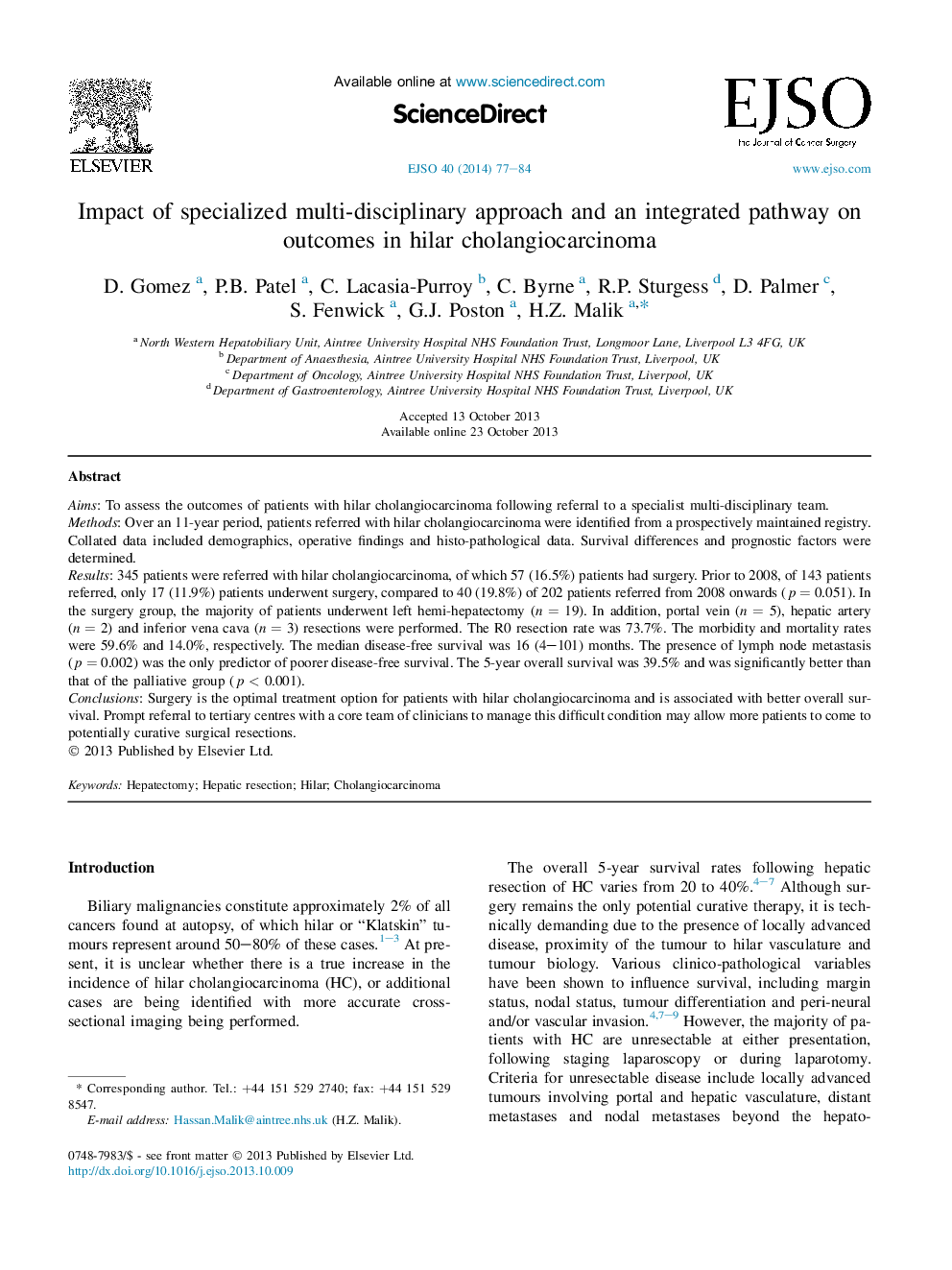| Article ID | Journal | Published Year | Pages | File Type |
|---|---|---|---|---|
| 3985263 | European Journal of Surgical Oncology (EJSO) | 2014 | 8 Pages |
AimsTo assess the outcomes of patients with hilar cholangiocarcinoma following referral to a specialist multi-disciplinary team.MethodsOver an 11-year period, patients referred with hilar cholangiocarcinoma were identified from a prospectively maintained registry. Collated data included demographics, operative findings and histo-pathological data. Survival differences and prognostic factors were determined.Results345 patients were referred with hilar cholangiocarcinoma, of which 57 (16.5%) patients had surgery. Prior to 2008, of 143 patients referred, only 17 (11.9%) patients underwent surgery, compared to 40 (19.8%) of 202 patients referred from 2008 onwards (p = 0.051). In the surgery group, the majority of patients underwent left hemi-hepatectomy (n = 19). In addition, portal vein (n = 5), hepatic artery (n = 2) and inferior vena cava (n = 3) resections were performed. The R0 resection rate was 73.7%. The morbidity and mortality rates were 59.6% and 14.0%, respectively. The median disease-free survival was 16 (4–101) months. The presence of lymph node metastasis (p = 0.002) was the only predictor of poorer disease-free survival. The 5-year overall survival was 39.5% and was significantly better than that of the palliative group (p < 0.001).ConclusionsSurgery is the optimal treatment option for patients with hilar cholangiocarcinoma and is associated with better overall survival. Prompt referral to tertiary centres with a core team of clinicians to manage this difficult condition may allow more patients to come to potentially curative surgical resections.
